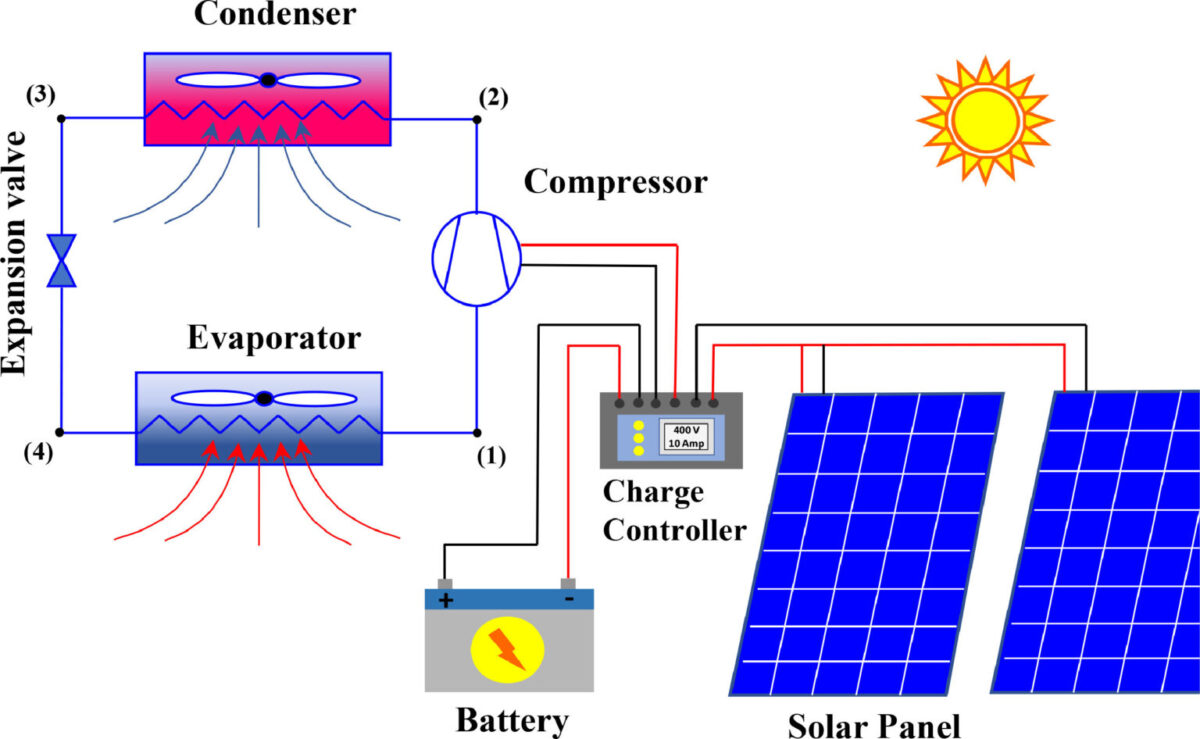From pv magazine Global
Researchers from Ulster University in the United Kingdom have developed a mini-split air conditioning bed unit powered exclusively by off-grid solar power and battery storage.
“This system has enormous potential for serving low-income households in developing countries, as it requires considerably less input power,” they stated in the paper “A Solar Powered Off-Grid Air Conditioning System with Natural Refrigerant for Residential Buildings: A Theoretical and Experimental Evaluation,” published in Cleaner Energy Systems. “This system offers a more energy-efficient alternative to conventional split units by cooling a canopy at night.”
The system, which the scientists said is designed to utilize low global warming potential (GWP) refrigerants, consists of two 400 W solar panels, two 130 Ah lead-acid batteries, and a vapor compression cycle (VCC) unit.
The external unit comprises a compressor, a condenser, an expansion valve, and the two batteries connected in parallel with a charge controller and inverter. The internal unit includes an evaporator, external ducts, and an indoor canopy. “The internal components comprise of the canopy, supply and extract flex ducts and the AC unit,” the research group explained.

Image: Ulster University, Cleaner Energy Systems, Creative Commons License CC BY 4.0
The proposed system configuration was assumed to operate in Abu Dhabi, UAE. The scientists said the simulation was performed at different condensation temperatures and showed that the batteries charged by the solar panels are capable of supporting the air conditioning unit during the night.
The system was assumed to run during the summertime, with operating temperatures ranging from 35 C to 40 C and the operating humidity being between 50% to 60%.
The scientists identified the GWP refrigerants R600a and R290 as the best candidates to replace the commonly used R134a and R410A. “Compared to R134a, the experimental coefficient of performance (COP) of R290 improved by 2.42 %, with less input work of 2.31 % and greater exergetic efficiency of 2.37 %,” they explained, noting that the COP shows the maximum value for all candidates as the temperature lift decreases. “Reducing the temperature lift between evaporator and condenser enhances the performance of the system.”
They also found that the unit using R290 requires less than one-third horsepower and that the two batteries were charged enough to operate the system for seven hours. “These results indicate that the unit is practically feasible,” they concluded.
This content is protected by copyright and may not be reused. If you want to cooperate with us and would like to reuse some of our content, please contact: editors@pv-magazine.com.









By submitting this form you agree to pv magazine using your data for the purposes of publishing your comment.
Your personal data will only be disclosed or otherwise transmitted to third parties for the purposes of spam filtering or if this is necessary for technical maintenance of the website. Any other transfer to third parties will not take place unless this is justified on the basis of applicable data protection regulations or if pv magazine is legally obliged to do so.
You may revoke this consent at any time with effect for the future, in which case your personal data will be deleted immediately. Otherwise, your data will be deleted if pv magazine has processed your request or the purpose of data storage is fulfilled.
Further information on data privacy can be found in our Data Protection Policy.